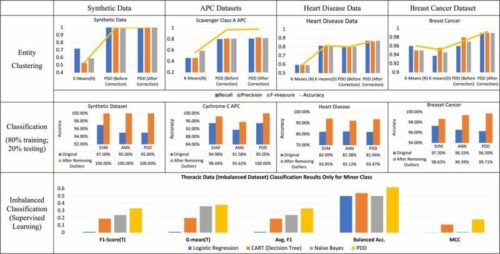Scientists at the University of Waterloo have created a unique model based on artificial intelligence that mitigates bias and makes decisions more accurate.

Traditional machine learning (ML) often produces biased results, favouring large groups or unknown factors, making identification challenging in instances with diverse patterns. Biased outcomes in healthcare, where decisions rely on vast datasets and complex algorithms, hold significant consequences. Specific patient groups with rare symptomatic patterns may go undetected, and mislabeled patients and anomalies could impact diagnostic outcomes. This inherent bias and pattern entanglement leads to misdiagnoses and inequitable healthcare outcomes for specific patient groups.
Dr Andrew Wong, professor emeritus specialising in systems design engineering at the University of Waterloo, has designed an artificial intelligence (AI) model that mitigates bias, amplifies trustworthiness and precision in decision-making and machine learning (ML)-driven knowledge organisation. Using ML, data sorting is expedited, optimising efficiency. This model dismantles bias-related hurdles by deciphering intricate data patterns and connecting them to the specific root causes that remain impervious to anomalies and inaccurately labelled instances. The model holds the potential to augment the confidence and dependability associated with AI significantly.
The researchers looked at much data about how proteins stick together using X-rays. They found patterns in how different parts of the proteins interact, but these patterns were mixed up because of many environmental factors. They figured out a way to separate these patterns and show the hidden information in the data. This discovery led them to create a new computer model called Pattern Discovery and Disentanglement (PDD).
Using the PDD model, the researchers have changed how patterns are detected. They’ve shown its power in many studies, proving it can predict how patients will do medically by looking at their health records. They also talked about how the PDD system makes it simpler to find new and unusual patterns in sets of data, which then helps find mistakes or odd things in machine learning.
“With PDD, we aim to bridge the gap between AI technology and human understanding to help enable trustworthy decision-making and unlock deeper knowledge from complex data sources,” said Dr Peiyuan Zhou, the lead researcher on Wong’s team. The outcomes illustrate that healthcare experts can formulate more dependable diagnoses backed by rigorous statistics and understandable patterns, ultimately leading to improved treatment advice for diverse diseases and various stages of their progression.






